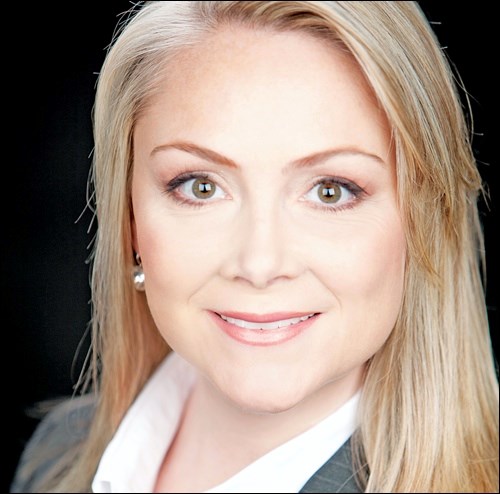New grads fresh out of university may have received some cash gifts from proud parents and relatives. Some may be tempted to blow it on partying and living the high life. Others may seek the excitement and potential of the stock market, to see if they can make a bundle in junior gold mines or energy companies. Either way, new grads are at a sweet spot in their financial lives. The smart ones will start with a blank slate and create a financial plan for disciplined saving, investing, and money management. Stick to it, and you will achieve great things, probably a lot sooner than you might expect. Here’s how.
Find that job, start paying off those student loans, and start a savings plan right now! Target a certain amount to put aside every month as savings. Some advisers say you should save 10% of your gross income. At your age, that’s probably still wildly unrealistic. So save whatever you can, even if it’s only a few bucks a week. Stick it in a Tax-Free Savings Account (which you can open at any bank). You’ll be surprised at how quickly it starts to add up. Especially if you invest the money in a tax-efficient way.
With that immediate lump-sum cash gift you have available, open a Tax-Free Savings Account (TFSA). This lets you invest your money in low-cost exchange-traded funds (you’ll need to open a brokerage account for these). If that sounds too complicated, start with good-quality mutual funds, many of which typically let you make a direct initial investment for as little as $500 or even less. Your money grows inside the TFSA tax-free, and you can withdraw your funds tax-free. TFSAs are great for shorter-term savings goals. There are various rules about contributions and withdrawals, and a financial planner can explain all these to you.
Because you’re young, you can probably afford to take on more risk with your investment allocations. Typically, younger folks are more risk-tolerant anyway, and they have a lot more time to recover if things go south (which they will at some point).
You don’t necessarily need to jump right into things like junior mines or risk high-tech ventures (sometimes still referred to as penny stocks because they trade for less than a buck a share), most of which are traded over-the-counter or on exchanges like the TSX Venture Exchange. But you can give it a shot if you like, just to get it out of your system. Old-hand speculators use the 10-for-1 strategy. For every 10 junior speculative stocks they speculate on, one will often pay off enough to cover the losses on the other nine plus a profit if you’re lucky.
I don’t recommend this type of strategy except with money you are prepared to lose. For the same reason, I don’t recommend novice investors stray into the more speculative thickets of futures or options trading until you know 100% what you’re doing and are perfectly willing to lose your entire stake, no questions, no complaints.
Younger investors with more tolerance for risk who are looking to get into the stock market, but who don’t want to make the time commitment necessary for do-it-yourself-style investing, might look at actively managed mutual funds as well as the growing number of active exchange-traded funds.
For example, Fund Library contributor and fund expert Dave Paterson recently looked at the award-winning Mawer Equity Fund, which has historically delivered high returns while keeping volatility (risk) below both its peer group and its benchmark index. And Fundata Senior Analyst John Krisko recently covered three high-performance award-winning funds with a responsible investing focus: Meritas Income & Growth Portfolio; PH&N Community Values Balanced Fund; and PH&N Community Values Global Equity Fund.
Another place to look for investment opportunities with higher risk and the potential for higher return is in the HYPERLINK "http://www.fundlibrary.com/funds/db/browse/by_type.asp" Fund Library list of investment fund categories. For example, in the Canadian Small/Mid Cap Equity category (typically a higher-risk category), the HYPERLINK "http://www.fundlibrary.com/funds/db/fundcard.asp?id=26313" iShares S&P/TSX Small Cap Index ETF (TSX: XCS) posted the highest year-to-date return of 21.41% as of May 31. But that窶冱 mostly because of its overweighting to gold stocks (21%), which rallied strongly through the first half of the year.
For some real excitement, you could look at the Passive/Inverse Leveraged category, where, for example, you窶冤l find a little number called the HYPERLINK "http://www.fundlibrary.com/funds/db/fundcard.asp?id=26547&t=1" Horizons Betapro S&P/TSX Global Gold Bull+ ETF (TSX: HGU), which rallied 132% year to date as of May 31. Of course, its longer-term performance tells the tale of risk, with negative average annual compound rates of return for every period over a year. That窶冱 probably the kind of excitement you can live without.
Getting into riskier investments with the potential for higher reward certainly will satisfy your craving for excitement. You could try the do-it-yourself approach with a self-directed investment account and take your chances, relying completely on your own knowledge and research. Or you could go for a more structured approach through mutual funds and ETFs, which have the advantage of professional management, but can provide thrills and chills enough for anyone.
Finally, before jumping into any investment, it窶冱 always a good idea to get a second opinion from a qualified financial advisor, perhaps a friend who studied business and finance at school, or a family friend or advisor with the experience and qualifications to point you in the right direction without dampening your enthusiasm.
Courtesy HYPERLINK "http://www.fundata.com/default.aspx" Fundata Canada Inc. ツゥ 2016. HYPERLINK "http://www.fundlibrary.com/features/authorDetail.asp?AuthorID=1074" Robyn Thompson, CFP, CIM, FCSI, is president of HYPERLINK "http://castlemarkwealth.com/" Castlemark Wealth Management. This article is not intended as personalized advice. Securities mentioned are not guaranteed and carry risk of loss. No promise of performance is made or implied.
_




